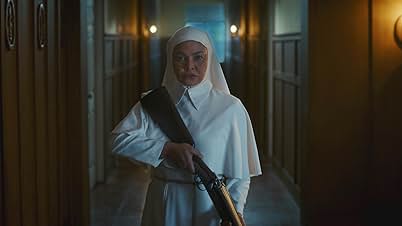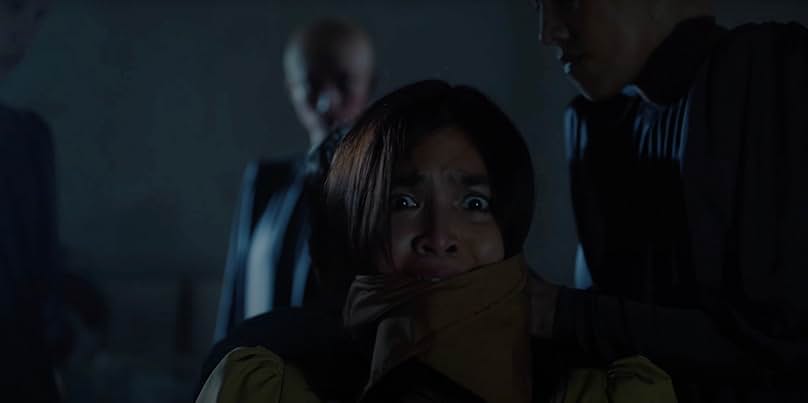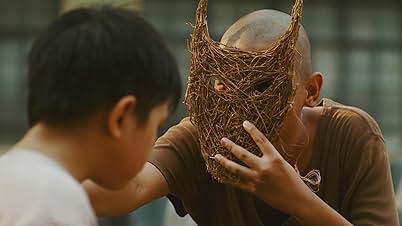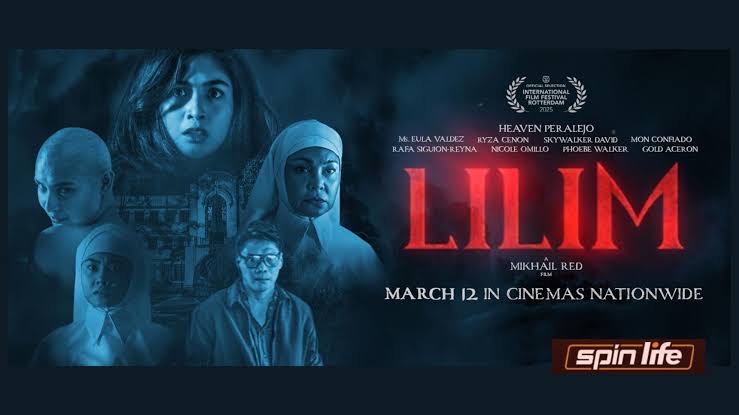The Lilim review reveals why this 2025 horror film delivers genuine terror and emotional depth. Mikhail Red’s masterful direction transforms familiar cult horror territory into something genuinely chilling and emotionally resonant.
What happens when you combine the innocence of seeking sanctuary with the most sinister religious extremism? You get horror perfection. Lilim (2025), directed by Mikhail Red, stands as one of the most compelling cult horror films in recent cinema history. This intense thriller follows siblings fleeing from the law who discover a secluded orphanage harboring a sacrificial cult devoted to a terrifying nocturnal deity. While the film operates on familiar religious horror territory, it succeeds because it never exploits its premise—every moment of terror and character development is handled with complete emotional authenticity.

Synopsis
Issa and her younger brother Tomas flee into the wilderness after a violent confrontation with authorities in 1983 Northern Luzon. Desperate and exhausted, they seek refuge in what appears to be a peaceful orphanage run by nuns deep in the forest. The religious sanctuary initially offers the safety and healing the traumatized siblings desperately need after their harrowing escape.
However, their relief quickly transforms into terror when they discover the orphanage operates under the control of a fanatical cult worshipping Lilim, a fearsome ancient deity that demands blood sacrifice. With nowhere else to run and the cult’s sinister rituals escalating, the siblings must survive the night and escape before they become the next offerings to this malevolent force.

Plot & Themes
Lilim operates on a devastatingly complex premise: sometimes the places we seek sanctuary become our greatest prisons. The orphanage setting serves as both safe haven and trap, exploring deeper questions about faith, corruption, and the courage to resist when authority becomes evil.
The film’s genius lies in its careful balance between horror elements and character development. When Issa faces impossible choices between protecting her brother and surviving the cult’s demands, the movie never treats her internal struggles as secondary to the scares. These moments work because Red understands that true terror comes from emotional investment in the characters’ desperate situation.
Thematically, the movie explores how religious extremism can corrupt places of supposed safety and how family bonds can provide strength against overwhelming evil. The siblings’ journey isn’t just about escaping physical danger—it’s about discovering that love and determination can triumph over fanaticism and fear.

Cinematography & Visuals
The cinematography captures the claustrophobic beauty of the forest orphanage with visual techniques that serve both the horror and emotional elements perfectly. The visual style emphasizes the contrast between the peaceful facade of religious sanctuary and the terrifying reality beneath, using natural lighting and shadows to create mounting dread.
The film excels in building suspense through environmental storytelling. The sequences showing the orphanage’s hidden chambers and ritual spaces demonstrate excellent use of practical locations and set design. The camera work holds on meaningful moments of fear and determination just long enough to create genuine emotional investment.
Religious imagery rewards careful viewing. During ritual sequences, attentive viewers will notice how traditional Catholic symbols become twisted into something sinister, reflecting the cult’s corruption of sacred traditions.
Acting & Characters
Heaven Peralejo delivers a compelling performance as Issa, anchoring the film with her portrayal of a young woman finding strength she didn’t know she possessed. Her character arc from desperate fugitive to determined protector feels authentic and earned rather than forced. Peralejo brings both vulnerability and fierce determination to her role.
Eula Valdez provides excellent support as one of the nuns, bringing both religious authority and growing menace to her performance. Her chemistry with the ensemble creates believable tension between sanctuary and threat.
Ryza Cenon rounds out the core cast with a performance that balances religious devotion with sinister undertones. Her scenes during the most terrifying moments demonstrate genuine fanaticism while maintaining character consistency.
Skywalker David as young Tomas delivers a naturalistic performance that never feels forced, creating a believable sibling bond that anchors the film’s emotional core.
Direction & Screenplay
Mikhail Red’s direction maintains perfect tension throughout the film’s runtime. Coming from his success with Deleter, Red understood that cult horror requires careful pacing that builds terror without sacrificing character development. Every revelation and ritual sequence is given space to resonate emotionally.
The screenplay layers tension at multiple levels:
- Character development that explores trauma and survival authentically
- Religious elements that feel researched rather than exploitative
- Horror components that build naturally from the cult’s practices
- Family bonds that never feel manipulative or forced
The script’s structure follows horror conventions while subverting them through genuine character growth. This creates familiarity that makes the unexpected moments of courage and terror land with greater impact.
Sound & Music
The film’s score perfectly balances religious hymns with underlying dread to create an audio landscape that mirrors the siblings’ psychological journey. The music enhances rather than overwhelms the natural horror of the cult’s twisted rituals.
Sound design plays a crucial role in building suspense. The way peaceful prayers transform into terrifying chants, and how the forest sounds shift from protective to threatening, creates an immersive experience that places viewers directly into the siblings’ nightmare.
The use of silence deserves particular recognition. Key moments of ritual and sacrifice are allowed to breathe without musical manipulation, trusting audiences to connect with the characters’ emotional reality through performance and atmosphere alone.
Conclusion & Verdict
Lilim succeeds because it treats its horror premise with intelligence and respect for both its religious themes and characters. Every element—from performance to cinematography to sound design—works in service of both terror and character development without sacrificing either.
Strengths:
- Exceptional lead performance that creates believable sibling bond under extreme pressure
- Authentic religious horror elements that feel researched and respectful
- Excellent pacing that builds dread while maintaining character focus
- Thoughtful exploration of faith and corruption through action rather than exposition
Minor Weaknesses:
- Some cult horror elements feel slightly familiar for the genre
- Occasional pacing issues in the middle section slow momentum briefly
This film remains essential viewing for horror fans and anyone who appreciates character-driven religious terror. Lilim works for audiences who enjoyed The Wicker Man, Midsommar, or Apostle.
Rating: 8.5/10
Director: Mikhail Red
MPAA Rating: R-16 (for disturbing violent content, terror, and thematic material)
Starring: Heaven Peralejo, Eula Valdez, Ryza Cenon, Skywalker David
For more horror reviews, check out our analysis of other Filipino cinema releases. You can also explore the film’s production details at the Internet Movie Database.


